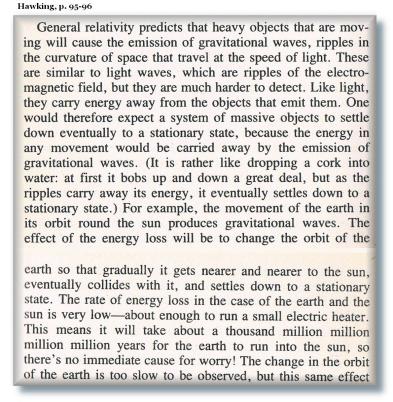The
most obvious problem is the event horizon of the black-hole.
General Relativity claims that time itself slows down with increased
gravity. Stephen Hawking and most other Astrophysicists claim
that the surface gravity of the black-hole is so strong that
anything trapped in this event horizon supposedly experiences
infinite time.
A photon or any other object traveling at any
velocity within the bounds of the event horizon at the edge
of the black-hole cannot escape. This is because here time has
slowed to an absolute standstill.
So how are gravitational waves expected to escape
the event horizon?
The
graviton moves at the velocity of light, which being a velocity,
requires time to move. But time has stopped. The black-hole
would then be unable to emit anything, including gravity which
is emitted at a velocity - which thus requires time to not be
infinitely slow.
(This
question is labeled Scenario 2A in the Full
Article)
